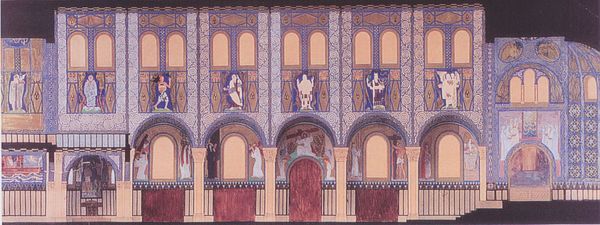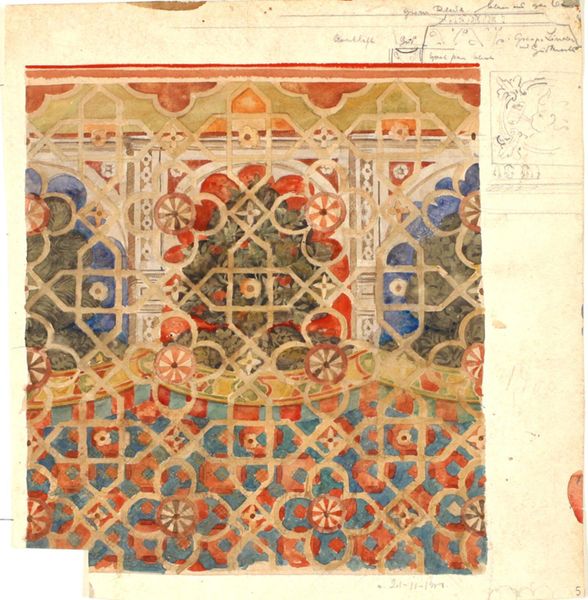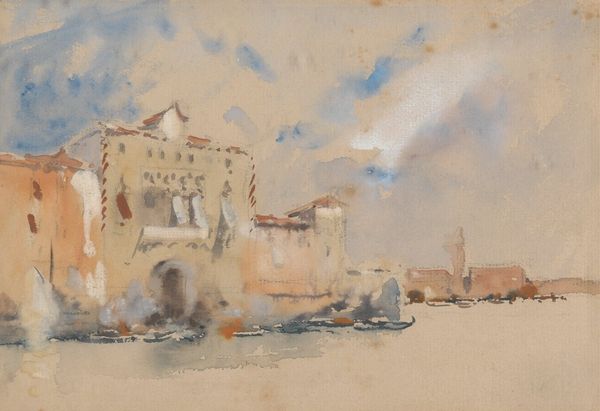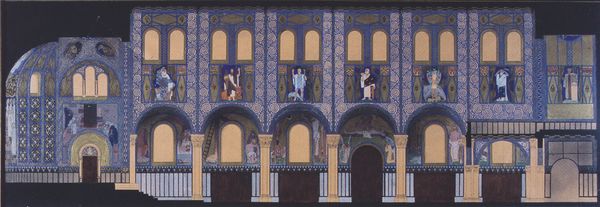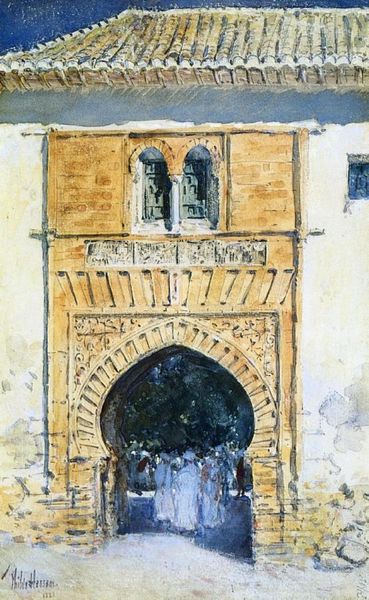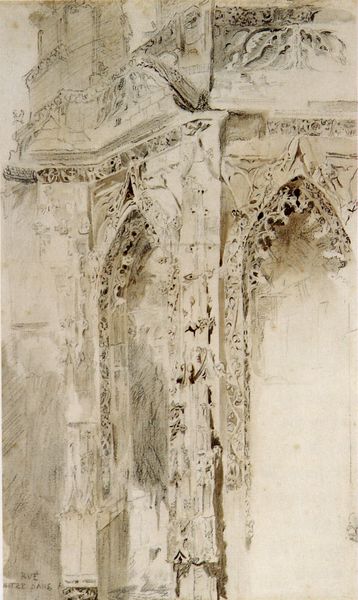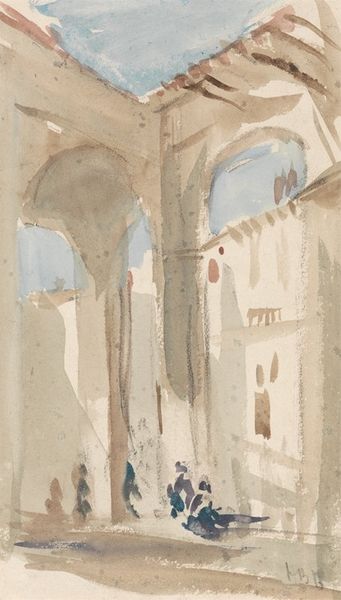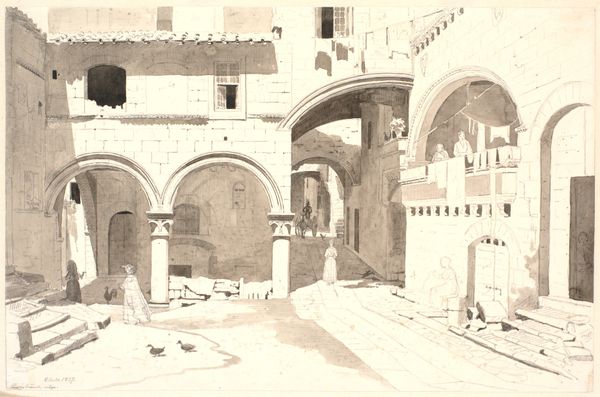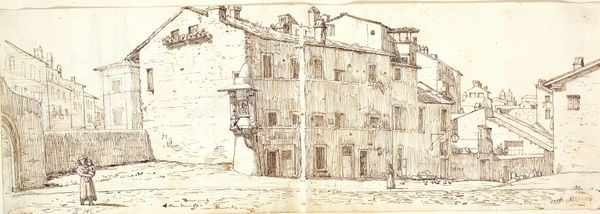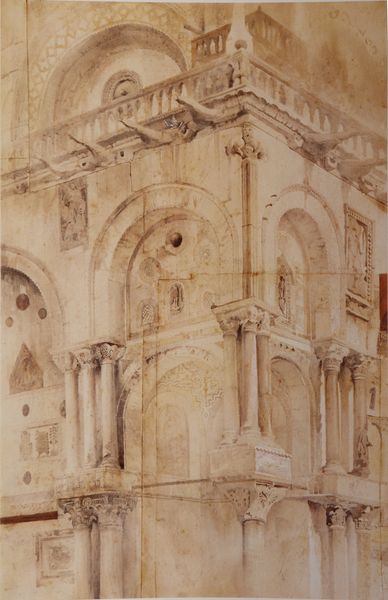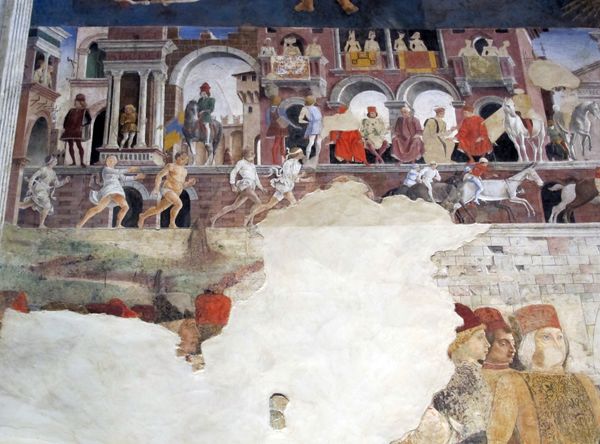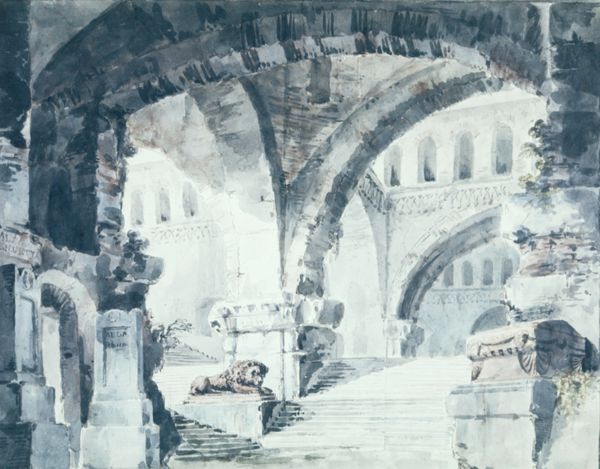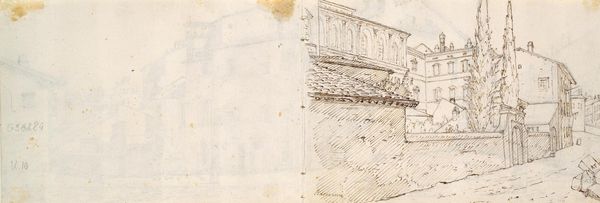
painting, watercolor
#
painting
#
landscape
#
oil painting
#
watercolor
#
romanticism
#
cityscape
#
watercolor
Copyright: Public domain
Curator: Here we have John Ruskin's watercolor and oil painting, "The Casa d'Oro, Venice," created around 1845. It captures a moment in the history of Venice, focusing on one of its most famous palazzi. Editor: It feels…unfinished, almost ghostly. The architectural details are rendered with precision where they exist, but they dissolve into these soft washes. I feel a sort of yearning looking at it. Like a memory fading. Curator: That's a keen observation. Ruskin was deeply concerned with the preservation of Venice. In the 19th century, the city was facing modernization that threatened its historic fabric, including buildings like the Casa d'Oro. He felt it his duty to meticulously document the details of Gothic architecture, a crusade, really. Editor: A crusade of delicate watercolors! It’s such an artist's response though, right? Like fighting decay not with brute force, but by meticulously capturing the fleeting beauty that is inevitably, irreversibly… fading away! Curator: Precisely! The Romantic movement placed a heavy emphasis on the importance of feeling and intuition and the sense of loss and melancholy inherent to modernity. Ruskin became something of an art critic who also, very pointedly, engaged with this theme in architecture. Editor: The almost minimalist palette enhances the wistful quality. Did the artist ever mention the materials? And what statement he sought? Curator: While documentation suggests a painting medium which incorporates both watercolor and oil paint, I find in "The Casa d'Oro, Venice," this reflects Ruskin's philosophical commitment: his blend of artistic sensibility with academic rigor to the effects of industry on society and artistic taste. The original sketches and paintings later played vital roles as primary documents in his publication, "The Stones of Venice". Editor: You know, looking at it again, this “unfinished” quality almost amplifies the architecture's vulnerability. Maybe Ruskin wasn’t just documenting decay, but prefiguring it… inviting us to contemplate what will stand and what is inevitably swept away. It is somehow also in the air. What do you think about the choice to capture air and atmosphere rather than precise reality? Curator: Indeed, it reflects the complex relationship between observation and emotion. For me, this reminds us that artworks are often not merely representations, but profound expressions that also capture history. Editor: Well said. For me, Ruskin’s poignant Casa d’Oro serves as a gentle call to cherish what remains while acknowledging the river of time’s relentless flow.
Comments
No comments
Be the first to comment and join the conversation on the ultimate creative platform.
